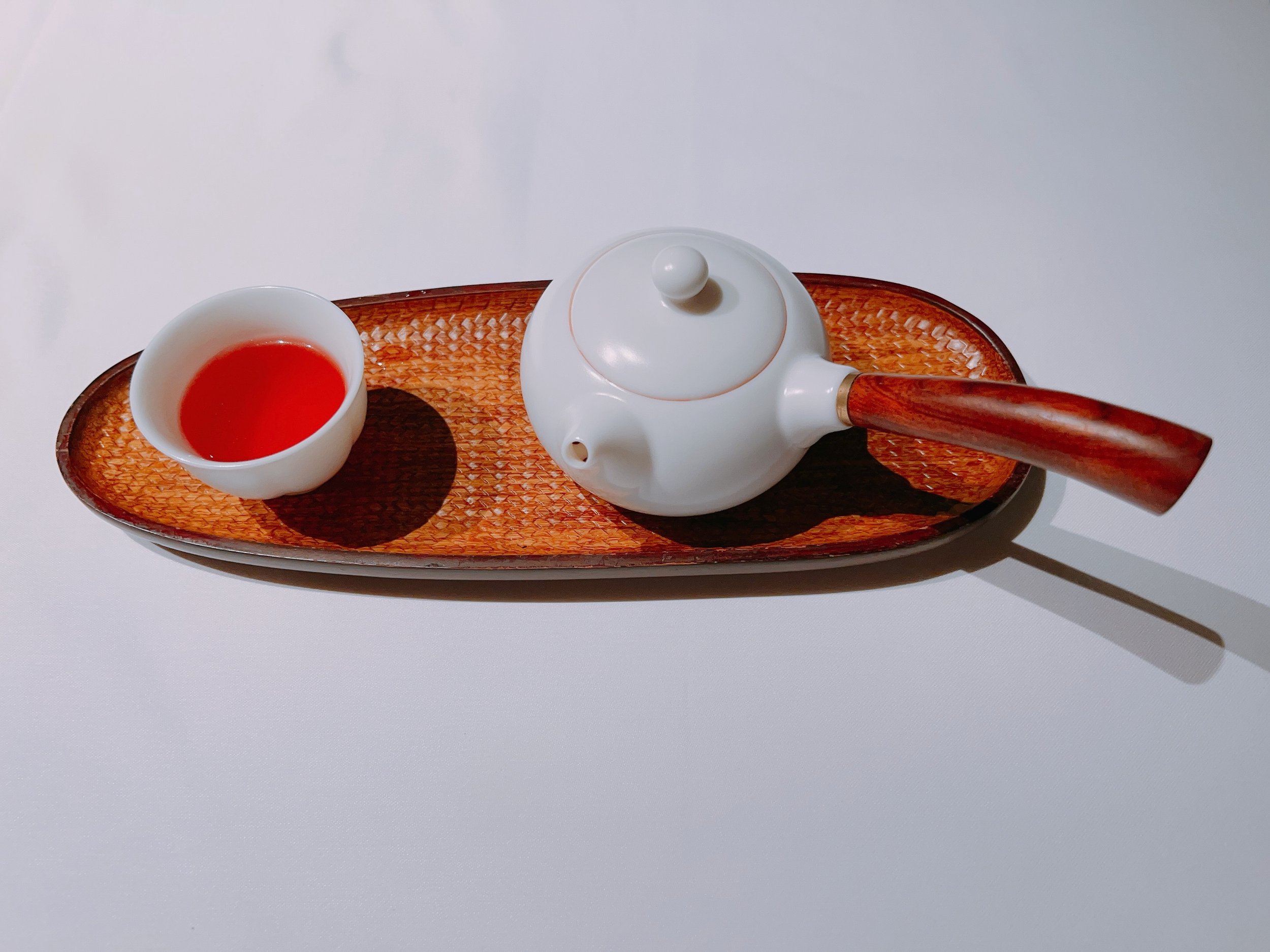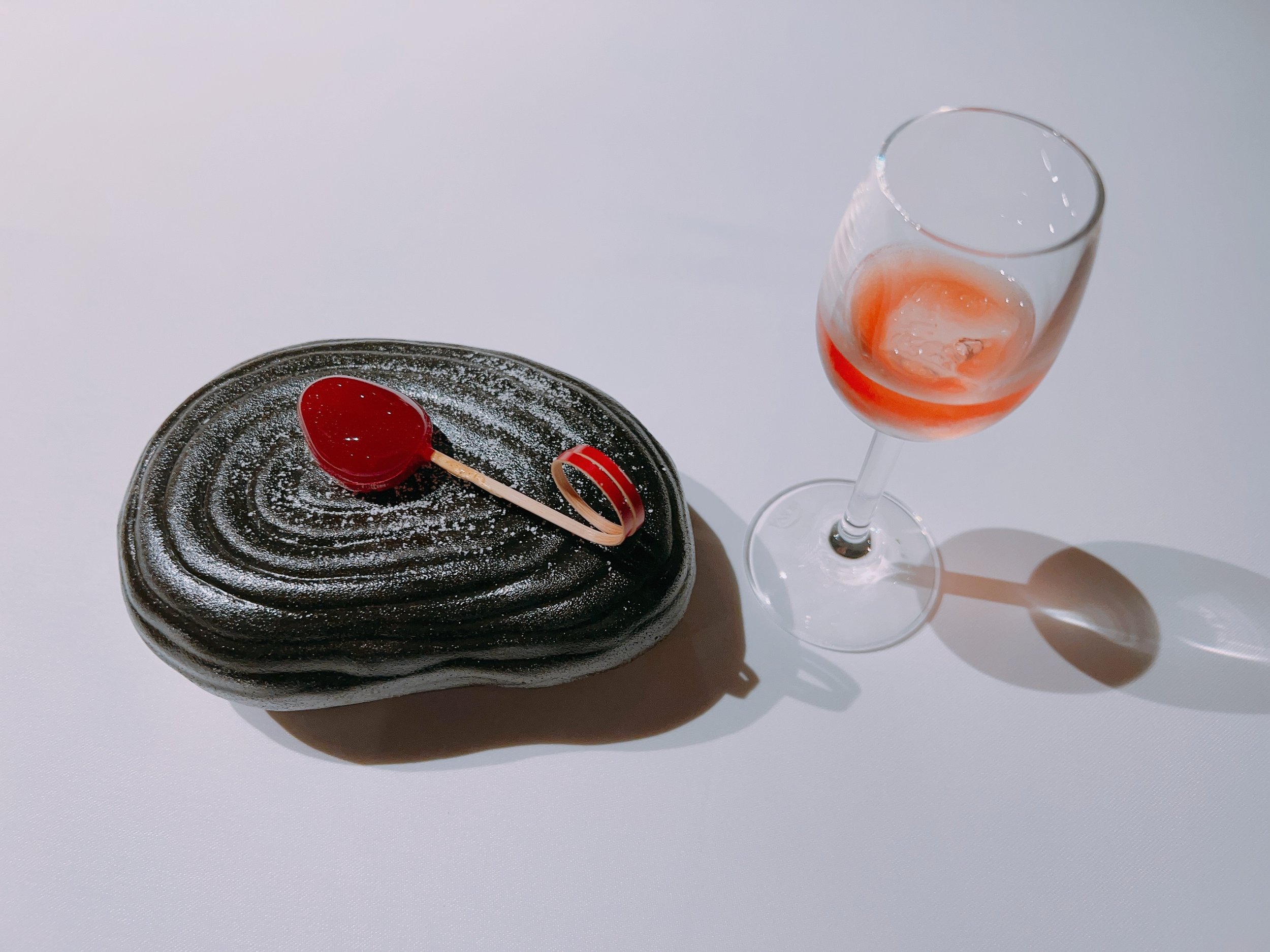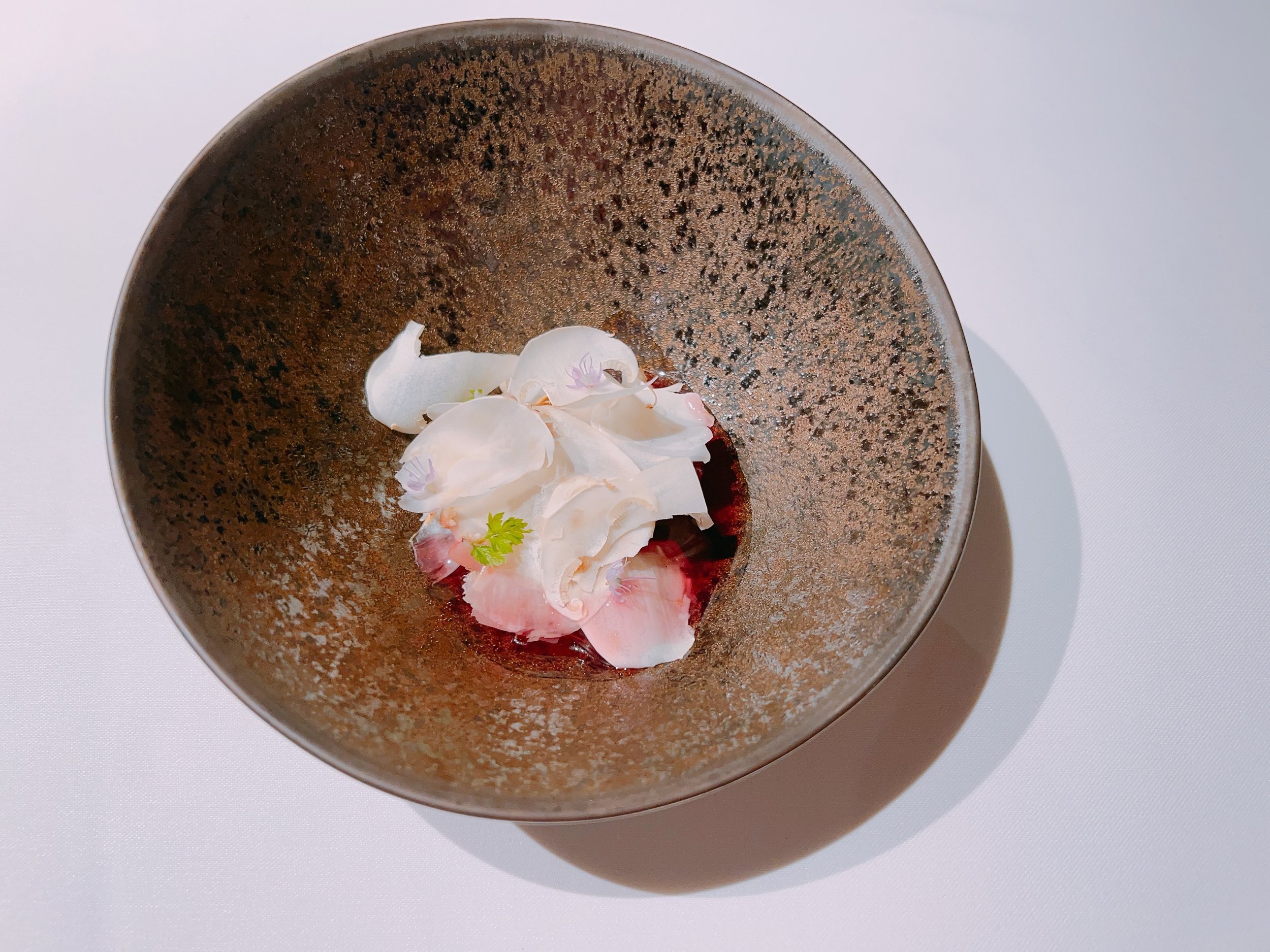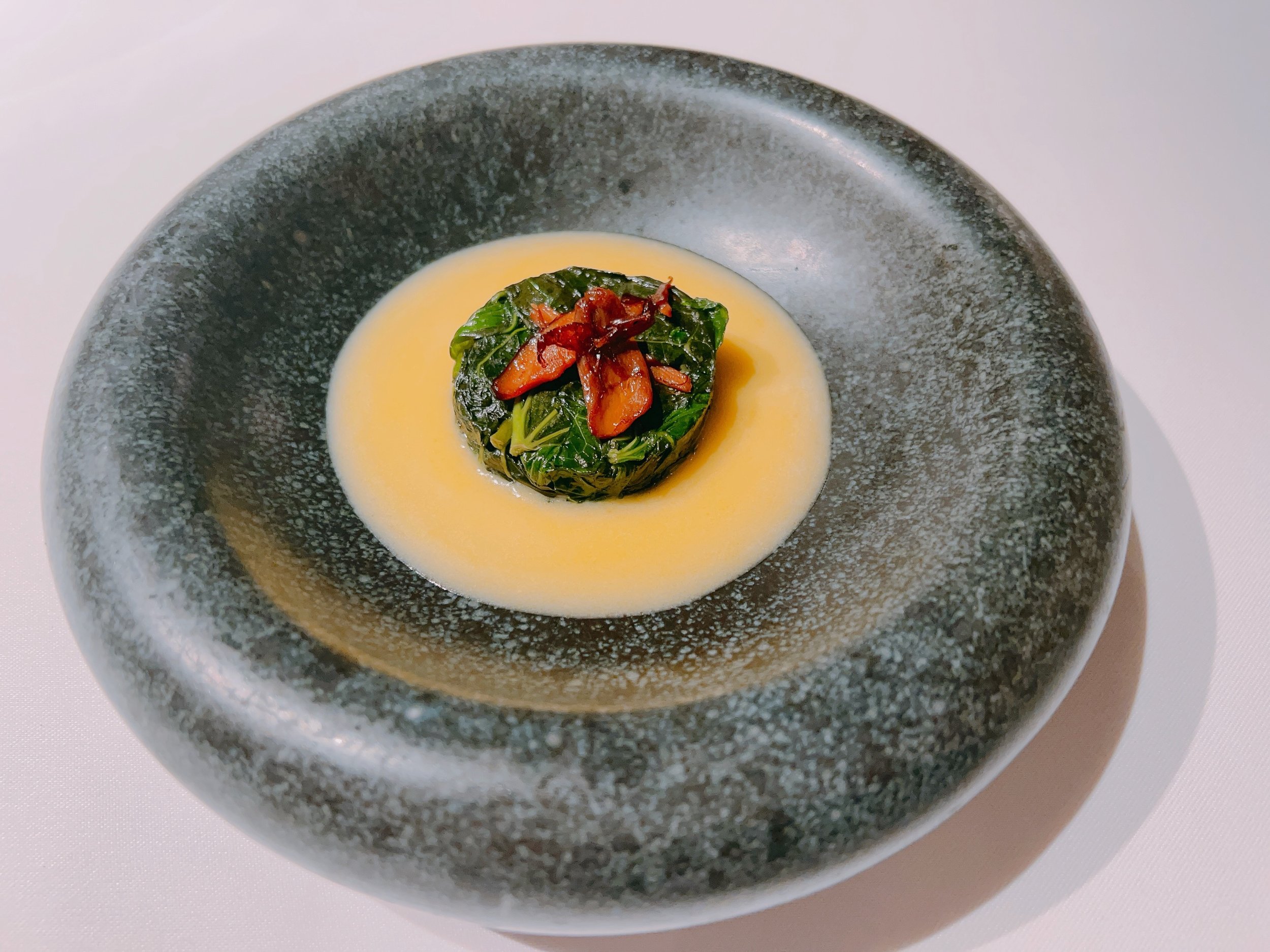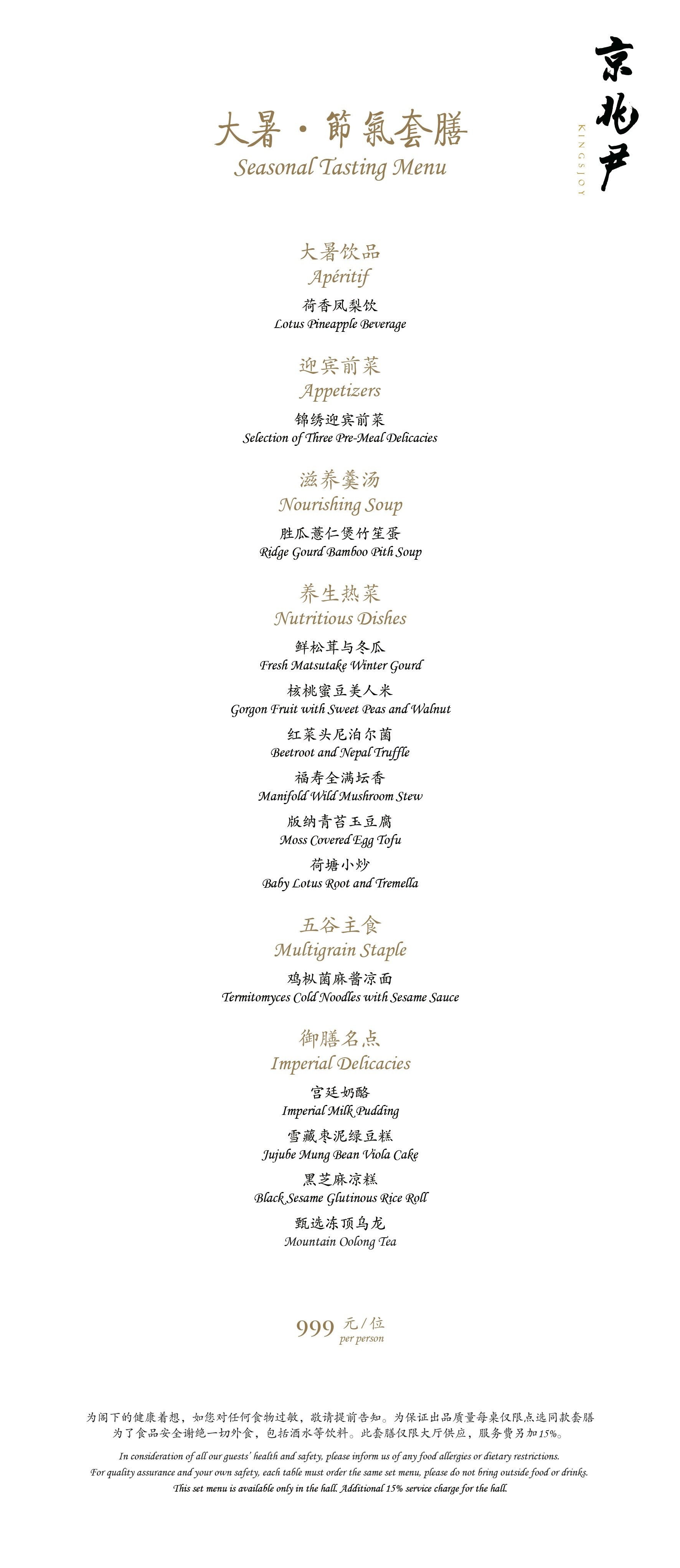King’s Joy - Beijing
Rating: 17/20
Where: Beijing, China
When: Dinner for 2 on 29 July 2023
Cost per Person: Tasting menu 999-3999 CNY
Accolades: 3 Michelin Stars (2021-2024)
Why: Delicious high-end vegetarian Chinese cuisine
“King's Joy” is a three-Michelin-starred restaurant serving Chinese food in Beijing. That's already a rarefied position to be in, but what makes this restaurant unique is that everything on the menu is vegetarian. When the restaurant earned its third star in late 2020, it was the first vegetarian restaurant to do so. (Since then, Eleven Madison Park has joined this exclusive club.) We probably would have visited sooner, but, well, there was the little matter of a global pandemic to contend with. So almost three years had passed, but we were still excited to see what King's Joy had to offer.
Why a vegetarian menu? According to our server, the restaurant's founder was Buddhist, and made the decision to serve only vegetarian food to match what he himself would eat. The business is still owned by the same family, with the founder's son now running the business, and his grandson helming the kitchen.
After moving a few times over the years, the restaurant ended up in its current location in 2012. It now occupies a custom-built building north of central Beijing near the Second Ring Road. Down a driveway, we walked past a parking lot full of high-end luxury cars and came to a large sign telling us that we had come to the right place. Past a small doorway was an outside walkway that resembled the layout of an old-style hutong, while clearly stemming from the 21st century. The main dining room was likewise quite modern, but unusually, a live harpist was playing selections from the “Titanic” soundtrack in the center of the room. She might have been more at home at a French chateau rather than a modern building in a bustling metropolis. I imagine that the owners were trying to figure out what “fine-dining vegetarian” means, when “fine-dining” might suggest old-worldly elegance, but vegetarian restaurants tend to be more modern. This is apparently what happens when these two worlds collide. While the main dining room had maybe ten tables (in addition to one harpist), the restaurant extended much further, including a few private dining rooms, and reportedly seats up to 220 guests at a time, making this possibly the largest three-star restaurant in the world. I don't think quite that many diners were in attendance on the Saturday night of our visit, but we didn't see any empty tables either.
A few days earlier, we had chosen among five available tasting menus that had been published ahead of time. The menus can be adapted for dietary restrictions, for example they can be made vegan. In order to try the widest variety of dishes, we picked the second-most-expensive menu at 2588 CNY. The only difference to the priciest menu was in the paired beverages (a glass of champagne and a cognac), which didn't seem worth the hefty price increase. By Chinese standards, King’s Joy is definitely not cheap, which probably explains the car display out front - this place doesn't cater to the local middle class. As I mentioned, the menu price included two glasses of wine and spirits, and there were more beverages served throughout the meal - some alcoholic, some not - so that there was a paired drink for most courses. Consequently, there was no additional beverage pairing on offer, but we tried a few wines available by the glass. They were totally acceptable, and (relative to the food prices) not that expensive. Service throughout was very friendly and competent, and our server spoke excellent English. He gave us a restaurant tour after all other guests had left (and when the staff was presumably itching to get home themselves), and even offered to pay for the Didi (China's Uber) trip back to our hotel. Definitely going way above and beyond!
The first bites of our dinner were as simple as can be: three grapes served on ice. The most memorable aspect of this was the grapes' size - they were gigantic. Tastewise, they were not overly sweet. Nothing too exciting here.
Luckily, a “real” dish arrived soon thereafter. It was an addition to the printed menu: an “organic vegetable carpaccio”. A large variety of sliced vegetables were served in a bowl that was full of wafting mist produced by dry ice underneath (mostly dissipated in the photo). Ginkgo nuts, radicchio, carrots, cucumbers, white asparagus, bamboo shoots, pumpkin, matsutake mushrooms, and many more. In the center of the bowl were lily bulbs and a sweet potato puree. The fresh vegetables were all pleasant, but what made this a fully-fledged dish were the four sauces that came with it: a salty bean sauce, a sesame sauce, some salted sesame oil and some soy sauce with wasabi. All of these sauces were delicious, full of flavor, and went really well with the vegetables. Light and delightful 18. My wife would have rated this a 19. We took our time enjoying this dish - apparently too much time in the opinion of the kitchen, since the next course was placed on our table while we were still nibbling on the veggies. In the following, we could see even more future courses pile up at the serving station, so we started to eat faster. It's a bit odd that the kitchen would be so out of sync with the dining room in a restaurant of this caliber.
Five little bites came on the next plate. From near to far: a rolled up slice of green papaya was seasoned with passion fruit vinegar. Crunchy, sweet, vinegary - one has to like passion fruit to like this dish 17. A morel mushroom was stuffed with wood-ear mushrooms. Very nice and meaty, and a little pepper gave it some spice 18. A tartlet filled with dried seaweed and dried quinoa was much too dry, almost powdery. Close to inedible - maybe I should have taken smaller bites... 13 What looked like a radish was actually a cherry tomato topped with a dried flower. A bit plain, even though it had been sweetened a bit 14. A piece of mango was delicious, this was some really excellent produce 19. All of these bites were served with a nice fermented mango drink on the side.
Next, a slow-cooked wild mushroom soup with ginger. The soup was clear, and had a reddish tinge from the mushrooms. Delicious - full of mushroom flavor and very light; no fat in evidence here 18.
A bamboo pith mushroom was served with green asparagus, a black truffle sauce and what looked like caviar on top. That “caviar” was actually the seeds of nettle grass. The mushroom tasted fine, but the supposed truffle sauce lacked truffle flavor and the asparagus was a bit too grassy and raw to be fully enjoyable 16.
Following this, a tartlet filled with gorgon fruit (looking a bit like lotus seeds), sweet peas, sauteed mushrooms and fresh jasmine tea. The gorgon fruit were somewhat chewy, reminding us a bit of mochi. Overall, this dish was pretty dry, it was best eaten together with the paired lightly fragrant tea. Pretty light in taste, I'd file this under “interesting” 15.
Another mushroom soup came next, this time with mushroom pieces, among them cordyceps, king oyster mushrooms and matsutakes. Some pumpkins, taro and peach resin were present as well. This dish felt a bit like the vegetarian version of Buddha Jump soup. A hearty, starchy soup, where some mushrooms had pronounced flavors, but most were only there for their texture - presumably their flavor has been transferred to the broth. The only weird part of the dish was the peach resin, which felt like almost tasteless, thick jello. But ignoring that, I thought that this was a very good dish 18.
Hawberries are a popular street food in China, where they are traditionally eaten candied on a stick. The next dish was a play on that theme, with the hawberry having been pureed before being candied. By itself, the berry was very sweet, but the paired fresh tart berry juice cut through the sweetness nicely. A yummy fruit bite, nothing more, nothing less 17. I guess that this was meant as a palate cleanser of sorts, since it was served between savory courses.
Tofu skin (yuba) had been rolled up with some egg, and then fried and topped with black truffles. Next to it: cubed carrots and a pumpkin sauce. The layered tofu was excellent - light and fluffy with a faint but still noticeable truffle taste. The carrots were a bit too raw and crunchy for my taste, and the pumpkin sauce felt undersalted, but otherwise this was a pleasant dish 17.
A shumai dumpling filled with mushrooms, celery, nuts and peas was covered with thinly sliced matsutake mushrooms and served with a “Peking sauce”. The latter was a broth of chestnuts and fruit. The dumpling was quite good, with a skin of medium thickness. Even though the sauce was based on fruit, it was thankfully not sweet at all. A pretty light dish for being “pasta” 17.
Whereas most dishes so far were based on Chinese cuisine, the next one had its roots firmly in Western cooking. A “Mushroom Wellington” was a play on the classic steak dish. Boletus mushrooms and quinoa were wrapped in a pastry shell, which rested on pickled asparagus and celtuce. On the side was a sauce made of cauliflower and white truffles that was seasoned with black pepper. Finally, there were some small pineapple cubes, which were yummy, but not really a good match for the rest of the dish. The Wellington was tasting so meaty that my pescatarian wife offered me her portion… I didn't mind, it was delicious. The pickles added some nice acidity and crunchy texture to the dish, and the cauliflower sauce was very tasty was well. I just wish there had been more of that sauce 17. This dish was paired with a glass of cognac, which seemed a bit strong compared to what was on the plate. Maybe better used as an after-dish drink.
The traditional “seasonal greens” dish of Chinese cuisine made its appearance next. Often served as an appetizer, here it came near the end of the meal. I guess that reversal makes sense, since vegetables are the stars of this dinner, and should rightfully take a prime time spot. Sweet potato leaves had been sauteed and were topped with wild mushrooms and surrounded by a bean broth. The greens were cooked perfectly, neither too much nor too little, so that they had some bite left without being stringy or chewy. Arranging them as a cylinder without compressing the leaves too much was also a neat feat. Tastewise, especially with the creamy sauce, the closest Western cuisine association might be creamed spinach, but that’s selling this dish short - it was very elegantly done 18.
Finally (or so we thought), a rice dish to conclude our dinner. In this case, we were served some unseasoned white rice and a side of condiments that one could add to taste. These were: dried enoki mushrooms, vegetable pickles, cilantro leaves and a “mushroom sauce”. The latter was similar to a fermented black bean sauce, just with mushrooms instead of beans. It turns out that the “all of the above” option was the best here: adding all condiments created a complex and tasty dish. Crunch and acidity from the pickles, umami from the mushrooms, cilantro, and a little chewiness from the enoki - delicious 18. The paired passion fruit ginger drink was also very good (assuming that one liked passion fruit).
The rice dish at the end of a Chinese (or Japanese) meal is often endless - one can ask for refills until one is satisfyingly full. But King's Joy has an interesting twist on this theme: why serve the same thing over and over again if one can serve something different every time? Challenge accepted - we set out to determine how many different dishes would appear if we kept ordering refills. Three, it turns out.
First, a variation on the rice dish we just had. The only difference was in the mushroom condiment; the mushrooms came in bigger chunks, and the sauce tasted more of mushrooms than of black beans. Still excellent 18.
Second, some dumplings filled with Chinese cabbage, bamboo shoots and mushrooms, served with a vinegar dipping sauce. Quite tasty as well, especially with the vinegar, and probably the prettiest dumplings I've ever seen 17.
Third, cold noodles that had been colored with red beet root juice. They were served with organic enoki mushrooms, cucumbers, carrots and a sesame sauce. This sauce was very nice and a bit spicy, possibly from ginger 16.
After finally exhausting all savory options, we continued to the sweet side of dinner. The main dessert was a milk pudding with osmanthus tea. Looking similar to a panna cotta, it was in fact much, much lighter than the classic Italian dessert. Sweet, but not too sweet, it got the balance of a light, simple dessert just right 18.
Three petit fours (called “petit trois”) arrived next. A cake of green apple mousse was topped with dark and white chocolate. Decent 16. Candied chopped macadamia nuts were held together with a roasted berry syrup. Caramelly, fruity, nutty - a well done combination 18. Lastly, an almond cake that was quite light and had only a hint of almond flavor 17.
Some oolong tea concluded our dinner. After that we were encouraged to write praise or criticism of the restaurant on a piece of paper and emboss it with a seal. Next, we were “asked” to pose for photos with signs saying “I love animals” and “Highly recommended”, presumably for the Chinese equivalent of Instagram. It felt a bit odd to be pushed into a marketing photoshoot after a dinner in a fine-dining restaurant, but maybe this is more acceptable in China.
Overall: An enjoyable dinner full of Chinese vegetarian cooking. For the most part, the dishes tasted great and were executed at a very high standard. I liked that there was close to no repetition in preparations and taste profiles. Also, nothing seemed forced, the vegetarian-ness came naturally. Apart from the Mushroom Wellington, none of the courses were “vegetarianized” meat dishes, all were organically vegetarian (in both senses of the word) 17.





